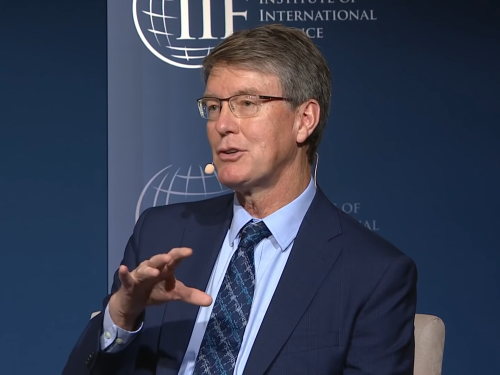Digital currencies and fintech
-
-
October 18, 2019
Panel: Institute of International Finance
Future of Money — Deputy Governor Timothy Lane participates in a panel discussion at the Institute of International Finance (IIF). -
The Economics of Cryptocurrencies—Bitcoin and Beyond
Since the creation of Bitcoin in 2009, over 2,000 cryptocurrencies have been issued. We evaluate how well a cryptocurrency functions as a payment system. -
Explaining the Interplay Between Merchant Acceptance and Consumer Adoption in Two-Sided Markets for Payment Methods
Recent consumer and merchant surveys show a decrease in the use of cash at the point of sale. Increasingly, consumers and merchants have access to a growing array of payment innovations as substitutes for cash. -
A Tale of Two Countries: Cash Demand in Canada and Sweden
Cash use for payments has been steadily decreasing in many countries, including Canada and Sweden. This might suggest an evolution toward a cashless society. But in Canada, cash in circulation relative to GDP has been stable for decades and has even increased in recent years. By contrast, the cash-to-GDP ratio in Sweden has been falling steadily. What has caused this difference? Are there lessons to be learned from comparing the Canadian and Swedish experiences? -
Explaining Unusual Cash Patterns in 2018
There was an unusually large decline of bank notes in circulation in October 2018. Some have argued that this was due to the legalization of cannabis in Canada in mid-October. -
Privacy as a Public Good: A Case for Electronic Cash
Cash gives users a high level of privacy when making payments, but the use of cash to make payments is declining. People increasingly use debit cards, credit cards or other methods to pay. -
Bank Market Power and Central Bank Digital Currency: Theory and Quantitative Assessment
We show that issuing a deposit-like central bank digital currency (CBDC) with a proper interest rate would encourage banks to pay higher interest to keep their customers. Banks would then attract more deposits and offer more loans. Hence, a CBDC would not necessarily crowd out private banking. -
May 2, 2019
Central Banks of Canada and Singapore conduct successful experiment for cross-border payments using Distributed Ledger Technology
This joint press release highlights the findings of the Jasper-Ubin experiment on cross-border, cross-currency payments using distributed ledger technology (DLT). -



